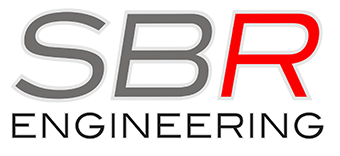Ferrari Testarossa
The Paris Motor Show in October 1984 saw the return of the glorious Testarossa as heir to the 512 BBi. Pininfarina’s design broke somewhat with tradition and was striking and innovative. The side intakes were larger than on the previous model and this constraint saw the introduction of the long side strakes that would become the Testarossa’s most recognisable feature.
The name Testa Rossa is Italian for Red Head, and refers to the colour that the camshaft covers were painted on the sports racing models. Naturally the modern bearer of the name followed suit with red painted camshaft covers. It made its debut in the glittering surroundings of the Lido nightclub on the Champs Elysées in Paris, on the eve of the 1984 Paris Salon, where invited press and guests were given a gala preview prior to its public launch the following day. One of the styling features that drew mixed reactions was the single exterior mirror mounted on the driver’s side screen pillar. Some people felt that the long twin aerodynamic support arms gave an unbalanced effect to the car, and a number of owners “corrected” it by adding a matching unit to the passenger side pillar.
From the Geneva Salon in 1997, the single pillar mounted mirror was replaced by similarly styled paired units, mounted in the lower front corners of the door glass. The engine was the first four valves per cylinder flat twelve cylinder configuration unit fitted in a Ferrari road car, but maintained the same cubic capacity of 4943cc, and 82mm x 78mm bore and stroke, of the 512 BBi model, and had factory type reference number F 113 A 000. It had twin belt driven overhead camshafts per bank, now driven directly off the crankshaft instead of via idler gears on the earlier Boxer models. The dry sump engine was longitudinally mounted in unit with the five speed transmission, in a very similar manner to that of the preceding Boxer series. It was fitted with a Marelli Microplex MED 120 B electronic ignition system and Bosch KE-Jetronic fuel injection, to produce a claimed 390bhp @ 6300rpm for European models, and 380bhp @ 5750rpm for US market models.
Ferrari Testarossa Technical Specifications
Year of Manufacture – 1984
| ENGINE | ||
| type | rear, longitudinal flat-12 | |
| bore/stroke | 82 x 78 mm | |
| unitary displacement | 411.92 cc | |
| total displacement | 4943.04 cc | |
| compression ratio | 9.3 : 1 | |
| maximum power | 287 kW (390 hp) at 6300 rpm | |
| power per litre | 79 hp/l | |
| maximum torque | 490 Nm (50 kgm) at 4500 rpm | |
| valve actuation | twin overhead camshafts per bank, four valves per cylinder | |
| fuel feed | Bosch K-Jetronic mechanical injection | |
| ignition | Marelli Microplex electronic, single spark plug per cylinder | |
| lubrication | dry sump | |
| clutch | twin-plate | |
| CHASSIS | ||
| frame | tubular steel | |
| front suspension | independent, unequal-length wishbones, coil springs, telescopic shock absorbers, anti-roll bar | |
| rear suspension | independent, unequal-length wishbones, coil springs, twin telescopic shock absorbers each side, anti-roll bar | |
| brakes | discs | |
| transmission | 5-speed + reverse | |
| steering | rack-and-pinion | |
| fuel tank | capacity 120 litres | |
| front tyres | 225/50 VR 16 | |
| rear tyres | 255/50 VR 16 | |
| BODYWORK | ||
| type | two-seater, berlinetta | |
| length | 4485 mm | |
| width | 1976 mm | |
| height | 1130 mm | |
| wheelbase | 2550 mm | |
| front track | 1518 mm | |
| rear track | 1660 mm | |
| weight | 1506 kg (dry) | |
| PERFORMANCE | ||
| top speed | 290 km/h | |
| acceleration 0-100 km/h | 5.8 sec | |
| 0-400 m | 13.6 sec | |
| 0-1000 m | 24.1 sec | |
